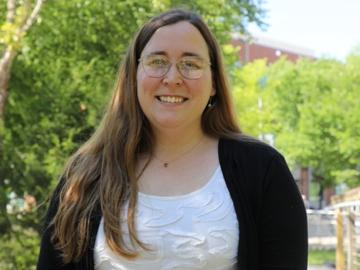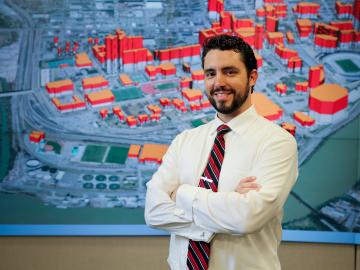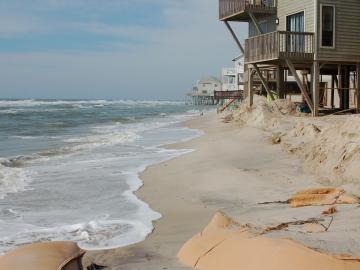
Filter News
Area of Research
News Type
News Topics
- (-) Energy Storage (37)
- (-) Frontier (45)
- (-) Isotopes (35)
- (-) Software (1)
- 3-D Printing/Advanced Manufacturing (60)
- Advanced Reactors (13)
- Artificial Intelligence (79)
- Big Data (50)
- Bioenergy (70)
- Biology (82)
- Biomedical (44)
- Biotechnology (26)
- Buildings (35)
- Chemical Sciences (37)
- Clean Water (17)
- Composites (12)
- Computer Science (117)
- Coronavirus (20)
- Critical Materials (6)
- Cybersecurity (14)
- Education (2)
- Emergency (3)
- Environment (124)
- Exascale Computing (51)
- Fossil Energy (6)
- Fusion (40)
- Grid (34)
- High-Performance Computing (82)
- Hydropower (6)
- ITER (4)
- Machine Learning (40)
- Materials (53)
- Materials Science (64)
- Mathematics (9)
- Mercury (7)
- Microelectronics (3)
- Microscopy (27)
- Molten Salt (2)
- Nanotechnology (21)
- National Security (63)
- Neutron Science (85)
- Nuclear Energy (71)
- Partnerships (36)
- Physics (39)
- Polymers (12)
- Quantum Computing (35)
- Quantum Science (49)
- Security (18)
- Simulation (44)
- Space Exploration (13)
- Statistics (2)
- Summit (40)
- Transportation (35)
Media Contacts

To bridge the gap between experimental facilities and supercomputers, experts from SLAC National Accelerator Laboratory are teaming up with other DOE national laboratories to build a new data streaming pipeline. The pipeline will allow researchers to send their data to the nation’s leading computing centers for analysis in real time even as their experiments are taking place.

Prasanna Balprakash, director of AI programs for ORNL, discussed advancing climate and weather research through high performance computing and artificial intelligence as part of a September 18 panel for the United States Senate.

Karly Harrod, recipient of the Early Career Competition Laboratory Directed Research and Development award at ORNL, is focused on extracting disease data from reports. Passionate about global health, she looks forward to applying her expertise to climate data within the geospatial science and human security division.

The Oak Ridge Leadership Computing Facility welcomed users to an interactive meeting at the Department of Energy’s Oak Ridge National Laboratory from Sept. 10–11 for an opportunity to share achievements from the OLCF’s user programs and highlight requirements for the future.

Daryl Yang is coupling his science and engineering expertise to devise new ways to measure significant changes going on in the Arctic, a region that’s warming nearly four times faster than other parts of the planet. The remote sensing technologies and modeling tools he develops and leverages for the Next-Generation Ecosystem Experiments in the Arctic project, or NGEE Arctic, help improve models of the ecosystem to better inform decision-making as the landscape changes.
After retiring from Y-12, Scott Abston joined the Isotope Science and Engineering Directorate to support isotope production and work with his former manager. He now leads a team maintaining critical equipment for medical and space applications. Abston finds fulfillment in mentoring his team and is pleased with his decision to continue working.

Nuclear physicists at the Department of Energy’s Oak Ridge National Laboratory recently used Frontier, the world’s most powerful supercomputer, to calculate the magnetic properties of calcium-48’s atomic nucleus.

ORNL’s Joshua New was named the 2024 Researcher of the Year by R&D World magazine as part of its R&D 100 Professional Award winners.

Jeremiah Sewell leads a team at ORNL, working on xenon-129 production for lung imaging. Reflecting on his career, Sewell views each opportunity as a "door" he steps through, leveraging over 25 years of experience in nuclear power and centrifuge operations to advance the facility’s mission.

A study found that beaches with manmade fortifications recover more slowly from hurricanes than natural beaches, losing more sand and vegetation. The researchers used satellite images and light detection and ranging data, or LIDAR, to measure elevation changes and vegetation coverage. Changes in elevation showed how much sand was depleted during the storm and how much sand returned throughout the following year.


